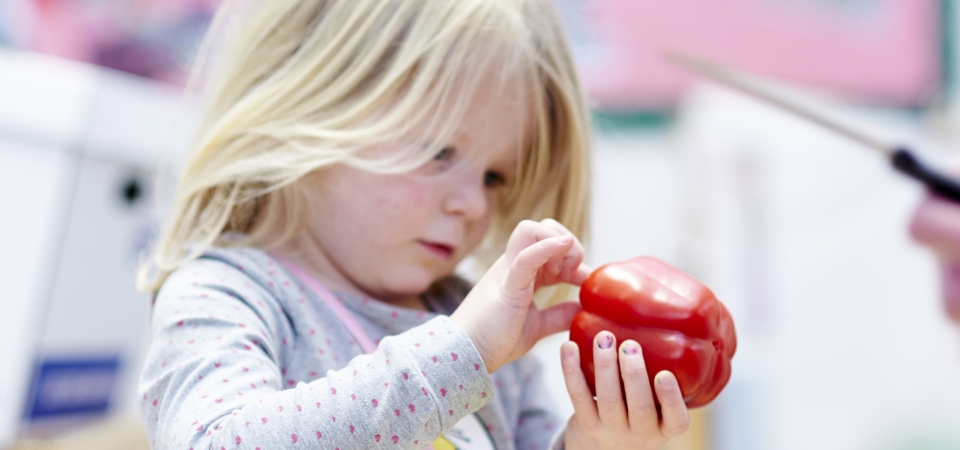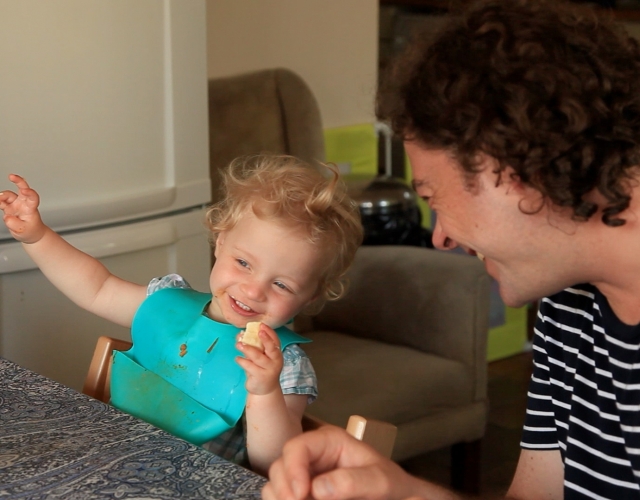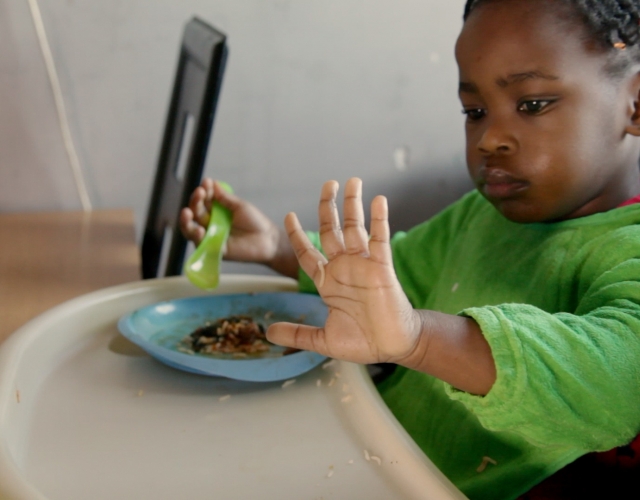Introducing new foods
Babies and young children have a natural tendency to prefer familiar and slightly sweet foods. This probably helped them to survive in the far distant past when the exploring toddler would have been most at risk from unfamiliar plants and berries – and the poisonous ones would have tasted bitter.
For today’s parents this means we often have to work a bit harder to help our children enjoy savoury tastes like vegetables. But if young children like what they know, the only way to familiarise them with new tastes and textures is to keep offering them. Our food preferences definitely change and develop over time – you can probably remember foods you didn’t like as a child but enjoy as an adult.
So what can we do to help children become more adventurous and confident around food – so they grow up eating and enjoying a wide range of healthy foods?
Aim for balance and realistic expectations
For healthy growth and development, children need a balance from the different food groups. Even if there are foods your child doesn’t like at the moment, think about what they do eat and whether this includes food from the different food groups.
The EatWell Guide shows a healthy balance of the 4 food groups for adults and children over 5. It’s also helpful to use it as a guide with younger children so they ‘grow into’ eating a balanced diet, although very young children need fewer carbs (potatoes, pasta, rice etc.) as their tummies are so small and a bit more dairy (or dairy alternatives).
It can be helpful to list out the foods that your child eats from the different groups. It’s easy to focus on what they don’t eat rather than what they do, and you might be pleasantly surprised when you look at the list. It will also show you where the gaps are so you can think about introducing foods that will improve the balance.
Aim for your child to eat a balance over the course of a day or even a week – it doesn’t matter if they don’t eat something from each group at every meal.
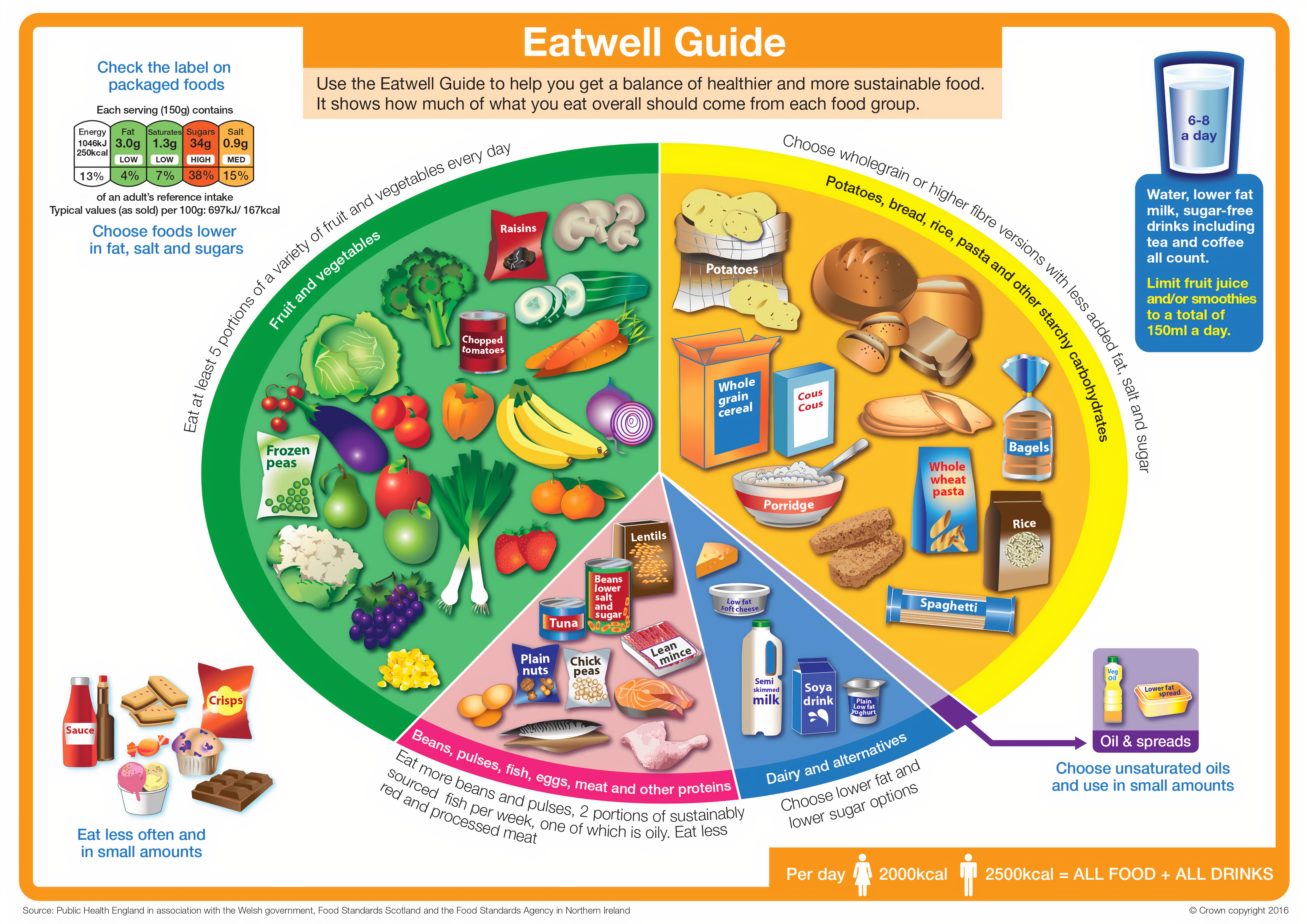
Start with what they like and make small changes
Many young children eat carbs and dairy more readily than some other foods – probably because they are generally very predictable in terms of taste and texture.
From a child’s point of view, vegetables, pulses, eggs, meat, fish etc. can be more difficult to recognise and trust because they come in very different colours, flavours and shapes. Young children can be very suspicious of new foods – you may find that your child won’t even eat familiar food if it has touched something else on their plate. While as adults we might enjoy sauces made of lots of different vegetables and other foods, children often prefer separate individual foods on their plate so they know what they are eating.
Starting with a typical meal that your child already enjoys, think of one or maybe two other foods you would like to add to it that would make it healthier. Give your child plenty of control and take it slowly – to start with you could put the new foods in a separate bowl and invite them to help themselves, or put them on the plate with the familiar food, but let your child know they don’t have to eat them until they feel ready.
Try, try and try again
Offering a new food a number of times will help your child become familiar with its smell, appearance, texture and taste. Stick with it – it may take up to 15 tries for a child to like a new food. And let them go at their own pace – for some children allowing it on their plate will be a big step forward – and then, over the course of a few meals, they may progress to touching and licking it or putting it in their mouth and spitting it out before they actually swallow it.

Praise without pressure
Notice and celebrate small successes – praise your child for taking little steps such as having a new food on their plate or trying a new taste. Describe exactly what your child has done when you praise rather than just saying ‘good boy’ or ‘good girl’. They are more likely to do it again if they know exactly what you are pleased about – for instance “Well done for trying that piece of tomato – good job”.
At the same time, keep your praise and encouragement light touch so that mealtimes aren’t all about your child’s eating. Chat about other things too - if your child senses that you’re watching every mouthful, they may react to the pressure by digging in their heels and refusing to eat.
Have some hands-on fun with food
Children love to play – so if food feels like fun, they’re more likely to take an interest. Involve them in some hands-on food preparation where they can touch food – making shapes with a pastry cutter, mixing, spreading. Encourage them to get creative – for instance by arranging vegetables on a plate as a picture for everyone to eat as part of the meal. Carrot sticks, slices of red and yellow pepper, tomato or cucumber and broccoli florets are all great for making faces, flowers and more.
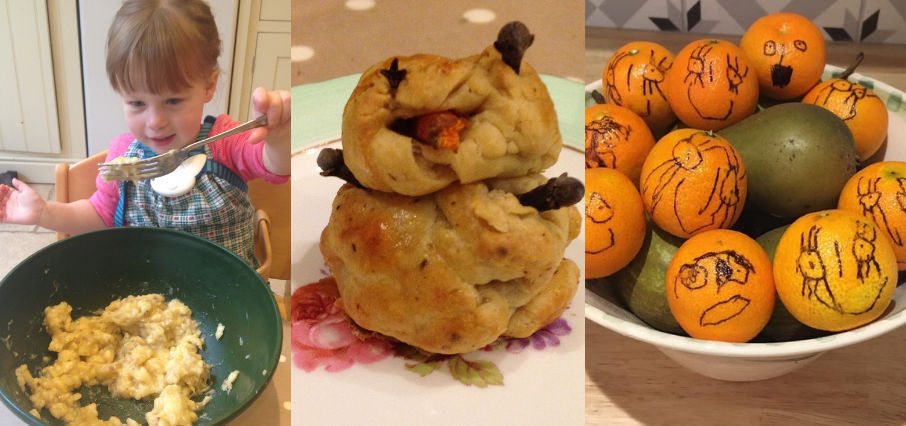
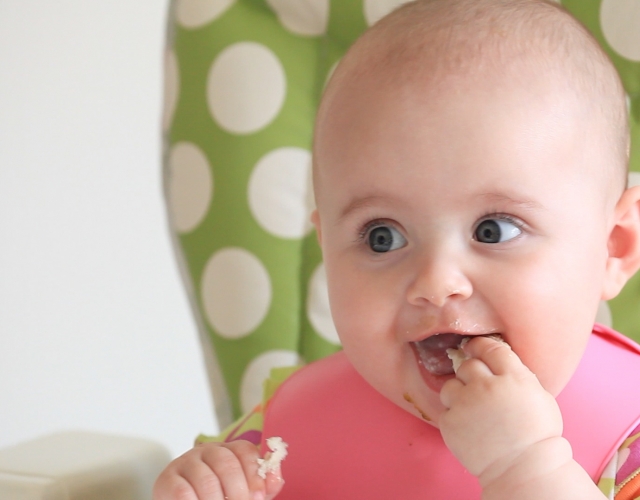
Getting your baby into healthy eating habits – as well as the rest of the family

